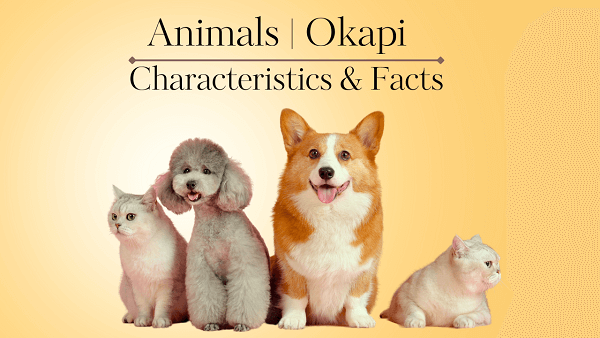
Okapi Definition | Characteristics & Facts
Okapi Definition
The okapi (Okapia johnstoni) is a unique and elusive mammal native to the dense tropical rainforests of the Democratic Republic of the Congo (DRC) in Central Africa. It is the only living relative of the giraffe and is known for its distinctive appearance and behavior. Here's a definition of the okapi:
Okapi General Characteristics & Facts
Unique Appearance
The okapi has a distinct appearance with its contrasting black-and-white striped legs and reddish-brown body. This coloration acts as camouflage in the dappled sunlight of the rainforest, helping it blend in with the surrounding vegetation.
Long Neck and Tongue
Despite being a relative of the giraffe, the okapi has a relatively short neck, though it is still longer than that of most other hoofed mammals. It also possesses a long, prehensile tongue, which it uses to grasp leaves and strip them from branches.
Solitary Behavior
Okapis are mostly solitary animals, and they prefer to roam alone through dense forests.
Nocturnal Activity
Okapis are primarily active during the night (nocturnal), which allows them to avoid potential predators and browse for food without much disturbance.
Herbivorous Diet
The okapi is a strict herbivore, primarily feeding on leaves, buds, fruits, and other plant material found in the forest understory.
Rainforest Habitat
Okapis inhabit the dense tropical rainforests of the Democratic Republic of the Congo. They are well-adapted to this environment, using their strong legs to navigate through the undergrowth.
Read our Animals Encyclopedia with Complete Facts
Physical Characteristics of Okapi
- Size and Build: The okapi is a relatively large mammal, with adult males standing around 1.5 to 1.7 meters (5 to 5.6 feet) tall at the shoulder, and females slightly shorter. They have a robust and compact build, with strong legs designed for traversing through dense rainforest environments.
- Coat Coloration: The okapi's coat is short and dense, with a velvet-like texture. Its body is a reddish-brown color, while the lower parts of its legs, including its front legs, are usually white. The most striking feature of the okapi's coat is the black-and-white striped pattern on its hind legs, resembling that of a zebra.
- Neck and Head: The okapi has a relatively short neck compared to its cousin, the giraffe. Its head is small and resembles that of a deer, with large, expressive eyes, and rounded ears.
- Prehensile Tongue: The okapi's tongue is exceptionally long and prehensile, allowing it to grasp leaves and vegetation with precision and ease. The tongue can extend up to 45 centimeters (18 inches) to reach and strip leaves from branches.
- Horn-Like Protrusions: Male okapis have horn-like structures on their forehead called ossicones. These are small and covered with skin and hair, giving the appearance of small knobs. Female okapis may also have these structures but are generally shorter and less prominent.
- Solitary and Shy Behavior: Okapis are generally solitary animals, preferring to roam alone in their rainforest habitat. They are shy and elusive, making them challenging to spot in the wild.
- Hooves and Feet: The okapi's hooves are cloven, similar to those of cattle and other ungulates. They have specialized feet with two functional toes and vestigial digits, aiding in their ability to navigate rugged terrain.
Continue To Explore All Animals That Start With O
Scientific Classification of Okapi
Kingdom: Animalia (Animals)
Phylum: Chordata (Chordates)
Class: Mammalia (Mammals)
Order: Artiodactyla (Even-toed ungulates)
Family: Giraffidae (Giraffids)
Genus: Okapia
Species: Okapia johns
Key locations of Okapi
Democratic Republic of the Congo (DRC)
View All A-Z Animals List
What does Okapi eat?
- Leaves
- Buds and Shoots
- Fruits
- Grasses and Ferns
- Twigs and Woody Vegetation
Okapi FAQs
Where is the okapi found?
The okapi (Okapia johnstoni) is found in the dense tropical rainforests of the Democratic Republic of the Congo (DRC) in Central Africa. Its natural range is limited to the Ituri Forest and surrounding areas of the northeastern part of the DRC. Okapis are highly adapted to this lush and humid rainforest environment.
Is the okapi related to giraffes?
Yes, the okapi is the only living relative of the giraffe (Giraffa camelopardalis).
What is the unique feature of the okapi's coat?
The okapi's coat features a striking black-and-white striped pattern on its hind legs, which resembles that of a zebra. This unusual coat coloration acts as camouflage in the dappled sunlight of the rainforest, helping the okapi blend in with the surrounding vegetation.




